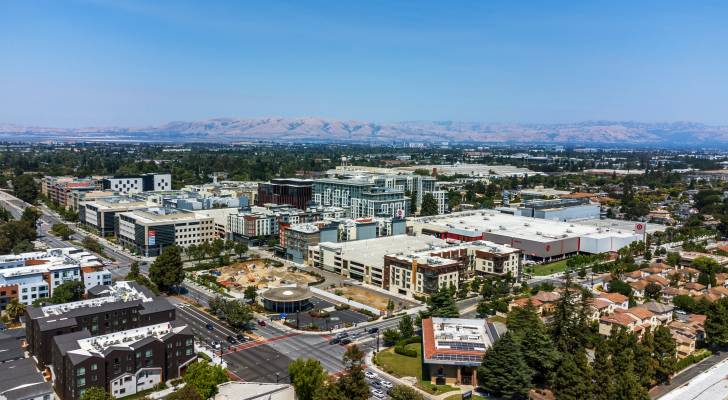
When you think of Silicon Valley, the first thing that comes to mind is technological innovation.
But it’s also home to a lot of money.
Don’t miss
- I’m 49 years old and have nothing saved for retirement — what should I do? Don’t panic. Here are 5 of the easiest ways you can catch up (and fast)
- You’re probably already overpaying for this 1 ‘must-have’ expense — and thanks to Trump’s tariffs, your monthly bill could soar even higher. Here’s how 2 minutes can protect your wallet right now
- Gain potential quarterly income through this $1B private real estate fund — even if you’re not a millionaire. Here’s how to get started with as little as $10
The region in Northern California hosts 56 billionaires and 145,000 millionaires, including prominent names like Meta CEO Mark Zuckerberg, Google co-founders Larry Page and Sergey Brin and Nvidia CEO Jensen Huang.
But a recent report from the Joint Venture Silicon Valley and Institute for Regional Studies highlights the extreme wage and wealth gaps that exist in this part of the country.
While per capita income is $157,000, more than double the national average, just nine Silicon Valley households hold more liquid wealth than the bottom 50% combined (447,000 households).
Households that are at the bottom half of the earning tier, hold a miniscule 1% of the overall liquid wealth in the area. The top 10% hold 71% and the remaining 40% hold 28%.
“We have the nation’s highest wealth gaps and the nation’s highest income gaps,” said Russell Hancock, president & CEO of Joint Venture Silicon Valley to NBC Bay Area.
Among those struggling to live in the area are folks like Robert Aguirre. Once working in tech, he’s now homeless.
So what happened?
Details from the Silicon Valley Index report show in detail the massive divide between the haves and the have-nots. One of main reasons for this gap comes from income disparities.
Since 2012, the income divide has grown twice as quickly compared to the rest of California and the U.S. The gap between residents of varying educational attainment levels is also wider here than elsewhere.
Around 30% of households living in Silicon Valley don’t earn enough to meet their basic needs, and 37% of children live in households that face food insecurity.
Read more: Want an extra $1,300,000 when you retire? Dave Ramsey says this 7-step plan ‘works every single time’ to kill debt, get rich in America — and that ‘anyone’ can do it
Since 1993, the region has seen a net addition of 472,000 people from abroad and a loss of 641,000 residents to other parts of the state and nation.
“It used to be this race to growth, and now it’s this efficiency push, and that’s translating into tremendous profits, but it means slow growth or no growth for our region,” said Hancock.
After working in the tech industry for several decades and even running a business at one point, Robert Aguirre ended up losing everything in the dotcom bust.
He told CBS News Bay Area that he lost his business after his manufacturing clients moved their work overseas. He also ended up losing his house and became homeless, living on the streets.
“People are pushed out, they’re priced out, they’re voted out,” Aguirre told the news outlet. “They’re just not given a voice, not given an opportunity, and it just wears down on everybody and suddenly there’s just no money coming in.” Aguirre now receives government assistance for housing and food.
“When you start telling people if you can’t afford to live here move somewhere else, I ask them, do you expect your barista to come from Central Valley to come here to make your coffee, or to groom your dog, or to do your hair?” he said. “You just can’t expect people to come from outside of the area, they need to be able to afford to live here as well.”
What to read next
- Don’t have the cash to pay Uncle Sam in 2025? You may already be eligible for a ‘streamlined’ handshake with the IRS — here’s how it works and how it can potentially save you thousands
- Robert Kiyosaki warns of a ‘Greater Depression’ coming to the US — with millions of Americans going poor. But he says these 2 ‘easy-money’ assets will bring in ‘great wealth’. How to get in now
- Here are 5 ‘must have’ items that Americans (almost) always overpay for — and very quickly regret. How many are hurting you?
This article provides information only and should not be construed as advice. It is provided without warranty of any kind.